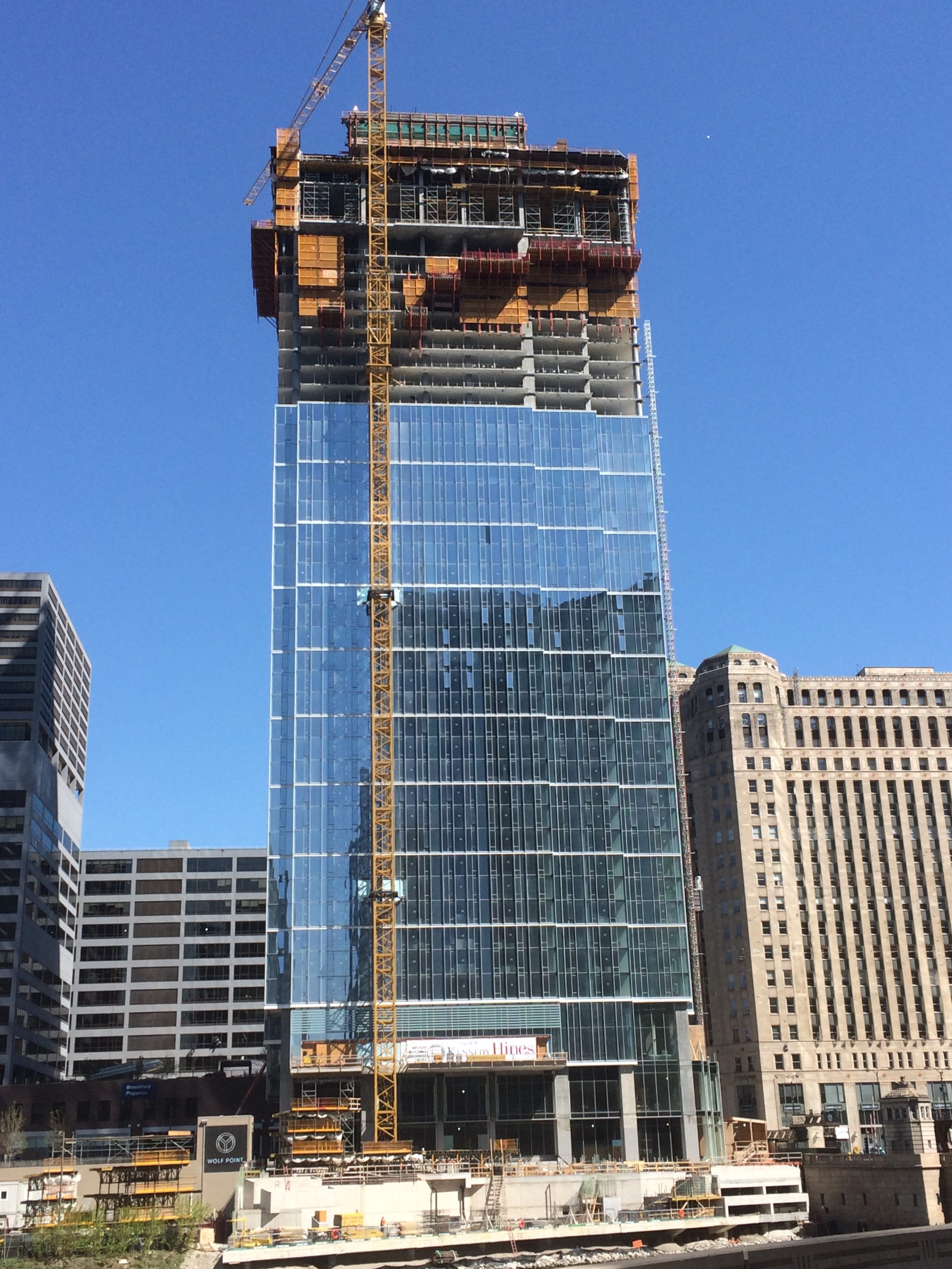On Friday I went to downtown Chicago for business. Since it was a warm, clear spring day, I wanted to do a more extensive walkabout, especially in the River North area, where I attended to business. But I didn’t have much time.
Instead I was able to take a quick walk near the Chicago River, mostly on the way to my appointment and heading back to Union Station afterward. I was near the place where the river divides into its North and South Branches, which is known as Wolf Point and is the origin of the Chicago Municipal Device.
For quite a while, Wolf Point was oddly underdeveloped, at least compared with the rest of the riverfront. For instance, until recently the point was occupied mostly by a parking lot.
No more. The latest project there, Wolf Point East, is still under construction.
 So Wolf Point looks a little different than at the beginning of this decade, and a lot different than it did in 1833.
So Wolf Point looks a little different than at the beginning of this decade, and a lot different than it did in 1833.
Hines, Joseph P. Kennedy Enterprises, the AFL-CIO Building Investment Trust and PNC Realty Investors are the developers of Wolf Point East; Pelli Clarke Pelli did the design. The 60-story tower will have 698 residential units — upper-end rentals — that will be available late this year.
Just to the east, of course, is the 4 million-square-foot Merchandise Mart, seen here catching a shadow in the mid-afternoon.
 A street runs between the Merchandise Mart and the river — the unimaginatively named W. Merchandise Mart Plaza — and from there, you can see the Merchandise Mart Hall of Fame. That is, eight bronze busts honoring one-time U.S. merchant princes, each facing the building. Joseph P. Kennedy himself commissioned the busts in the early 1950s, which was possible because the Kennedy family owned the Merchandise Mart for many decades.
A street runs between the Merchandise Mart and the river — the unimaginatively named W. Merchandise Mart Plaza — and from there, you can see the Merchandise Mart Hall of Fame. That is, eight bronze busts honoring one-time U.S. merchant princes, each facing the building. Joseph P. Kennedy himself commissioned the busts in the early 1950s, which was possible because the Kennedy family owned the Merchandise Mart for many decades.
The busts are in two groups of four. These are the busts to the west. They don’t look so large from across the street, but the heads are four times the size of a regular human head.
 From left to right: John Wanamaker, founder of the stores by that name; George Hartford, founder of A&P; Edward Filene, founder of those stores; and Montgomery Ward.
From left to right: John Wanamaker, founder of the stores by that name; George Hartford, founder of A&P; Edward Filene, founder of those stores; and Montgomery Ward.
These are the busts to the east.
 Construction and taxis whizzing by made it a little harder to make an image, but in any case they are Robert Wood, a chairman of Sears; F.W. Woolworth; Julius Rosenwald, another chairman of Sears and founder of the Museum of Science and Industry; and Marshall Field.
Construction and taxis whizzing by made it a little harder to make an image, but in any case they are Robert Wood, a chairman of Sears; F.W. Woolworth; Julius Rosenwald, another chairman of Sears and founder of the Museum of Science and Industry; and Marshall Field.
More about each of the busts is here. Twelve years ago, at least, they looked like they needed some restoration. I didn’t get quite close enough to them this time to know whether that has happened.